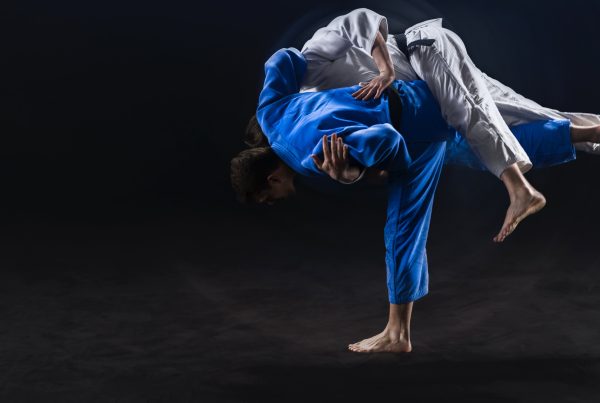I’m a part-time, volunteer educator.
I say “educator” rather than “instructor” or “trainer” because my mission is not to simply impart athletic abilities or to help my students win tournaments (that’s quite secondary to me), but rather to help them become the best all-around people that they can be. Another appropriate word to describe my role, I think, would be “teacher”. I’m incredibly fortunate to have been given this opportunity, which is also a great responsibility.
There are many, many worthy means for developing people but my own vehicle as an educator is judo.
As is true for most educators in most established fields, I am beholden to a long and distinguished tradition. That is to say that I did not invent judo; I received it as a precious gift from my own sensei, who received it in turn from his own teacher, and so on and so forth in an unbroken line that stretches all the way back to the founder of judo, Jigoro Kano.
Judo, as I have previously argued, fits to a T the Aristotelian definition of a “practice” as summarized by philosopher Alasdair MacIntyre in his seminal work After Virtue:
“A practice involves standards of excellence and obedience to rules as well as the achievement of goods. To enter into a practice is to accept the authority of those standards and the inadequacy of my own performance as judged by them. It is to subject my own attitudes, choices, preferences and tastes to the standards which currently and partially define the practice. Practices of course, as I have just noticed, have a history: games, sciences and arts all have histories. Thus the standards are not themselves immune from criticism, but nonetheless we cannot be initiated into a practice without accepting the authority of the best standards realized so far.” Alasdair MacIntyre, After Virtue (1981), page 190 (my emphasis).
This notion of the aims and standards inherent to a practice is absolutely key. To put it another way, judo (or hockey, or calculus) is not what I decide, at my whim, that it should be. It is well codified and held together all around the world as a unified martial art by some basic standards that were, for the most part, developed and laid out in his extensive teachings by Kano Shihan. As an inheritor to this tradition, it’s my responsibility to pass it on to my own students, to the best of my abilities, in the form that was intended by those who preceded me on this path. If I push aside the accepted aims and standards, I can no longer be said to be initiating my students into the practice defined, through those aims and standards, as “judo”.
How far should a teacher go in watering down the standards of his or her art just because a student dislikes or struggles with certain aspects of the curriculum? Because, well, it’s not easy?
For instance, Kano Shihan enjoined his followers to develop their skills and understanding of judo through two main types of exercises which I have written about previously: kata (forms) and randori (sparring). Could a student who never spars and has never done so be said to be proficient at a fighting art whose standards of excellence entail the pursuit of effectiveness as a fighter? And if sparring with abandon – each according to his or her own abilities – is one of the keys to unlocking some of the higher goods or benefits associated with this particular practice (see here and here), should a student who has never learned to spar effectively, or fails to meet any of the other codified standards inherent to the practice, ever be promoted to the next level? What would be the point if the basic standards are not met? After all, anyone can go online and buy a belt of any color – even a black belt – for just a few dollars.
You cannot have your proverbial cake and eat it too; claim the goods inherent to a given practice – whether it be a game, a science or an art – while turning your back on some key aspects of whatever makes that practice what it is. You can of course choose a different path better aligned to your own inclinations but that’s a different matter. Once you choose a given practice, and as long as you decide to persevere on that path, you are accepting those fundamental standards as well as the pursuit of those stated goods or benefits the absence of which would indicate that you are no longer within the framework of what you initially set out to achieve.
There are things in life that are worth pursuing with courage and determination as a means of learning and growing. Pursuits that matter the most, I believe, are necessarily difficult and challenging (try learning to play the violin!), for in the struggle itself often lies the most precious of opportunities: The development of higher-order excellences – qualities of mind and character such as courage, tenacity, wisdom and self-control, to name only those.
Inevitably, some will drop off along the way for all sorts of reasons. Others will take longer to get there and their efforts are to be supported and encouraged. And it goes without saying that teachers should always strive, within the accepted framework, to adapt their teaching to the needs of their students. But watering down the essential standards and forfeiting in the process the most precious benefits that a practice has to offer helps nobody, least of all the person who gets a pass.



